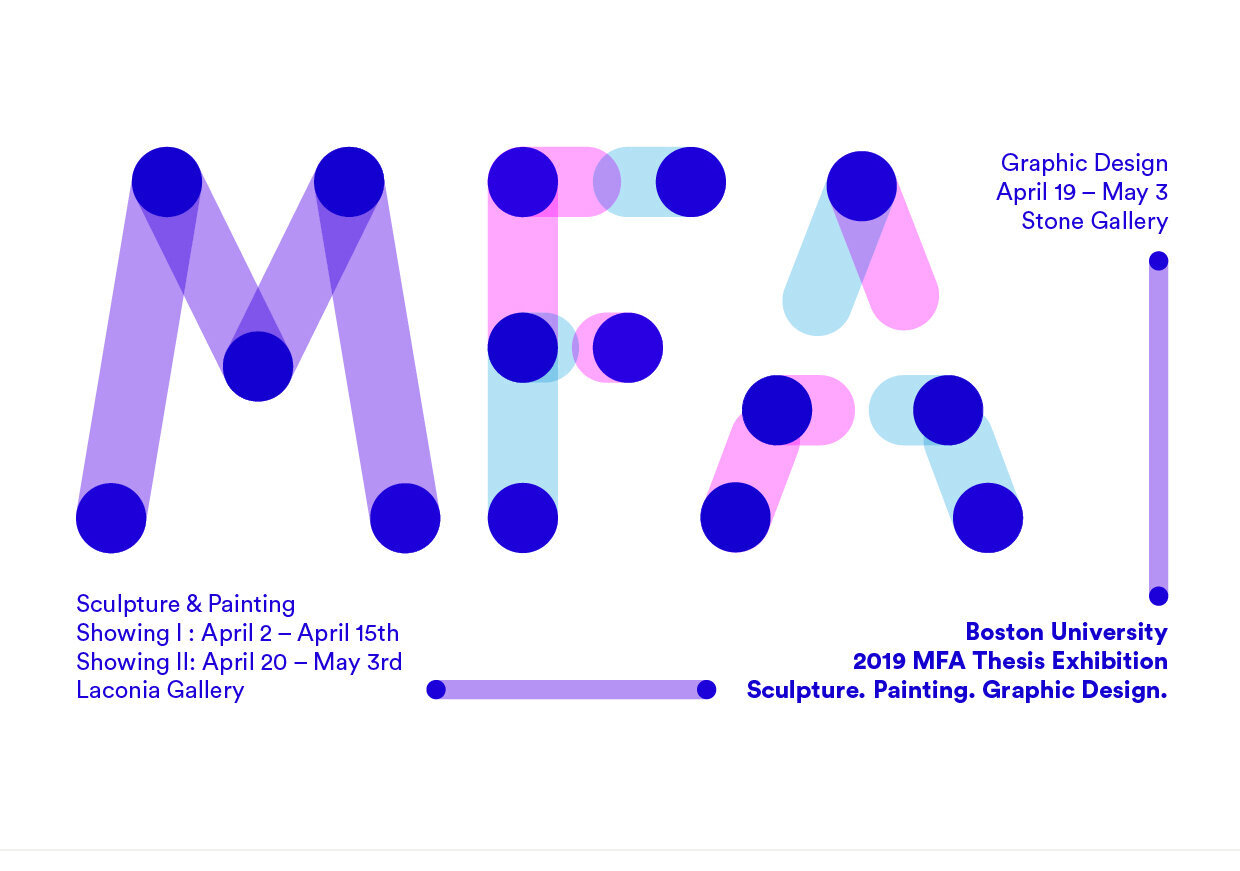Boston University 2019 MFA Thesis Exhibition I: Painting
Tuesday, April 2, 2019 to Friday, April 19, 2019
Opening Reception: Friday, April 5, 5:30-8:30 pm
Exhibition hours:
Tuesday April 2: 12:00 – 4:00
Wednesday, April 3: 12:00 – 6:00
Thursday, April 4: 12:00 – 6:00
Friday, April 5: 12:00 – 8:30 (First Friday)
Saturday, April 6: 12:00 – 4:00
Sunday, April 7: 12:00 – 4:00
Monday, April 8 – Wednesday, April 10: Gallery closed
Thursday, April 11: 12:00 – 6:00
Friday, April 12: 12:00 – 6:00
Saturday, April 13: 12:00 – 4:00
Sunday April 14: 12:00 – 4:00
Monday April 15: 12:00 – 4:00

Painting I,
Featuring Elizabeth Flood, Kat Gardener, Sam Guy, Zak Schiff, and Gus Wheeler.
The Master of Fine Arts in Painting program at Boston University teaches students to engage critically with this ancient form of expression. As artists, they make the medium contemporary through the recognition of their own sensibility, the maintenance of a rigorous material practice, and an awareness of the conditions of our time. The program encourages a diversity of artistic approaches so that students learn there is no right or wrong way to make art. They themselves have the freedom to define what painting means today. This variety is reflected in the work on view, the first of two graduate thesis exhibitions. These five artists have developed together, alongside their wider cohort, over the last two years, charting their practices in relation to one another’s.
Samuel Guy and Elizabeth Flood work directly from life, painting experientially in relation to people or places. Through the act of looking—and being seen—these two artists congeal the exchange between themselves and their subjects on the surface of their paintings. Both are after a particular intimacy, a knowledge that can only be attained through touch and color. Where Flood rapidly tracks her observations through jabs and smears of earthy pigment, Guy softly brushes on the effects of light on skin. It is winter in this work. In Flood’s paintings of a quarry and a desert mine, cold midday sun cuts shadows across rocky terrain. Guy’s roommates hang out in the dusty light of a living room at night, illuminated by screens and friendship.
Zak Shiff and Gus Wheeler also use painting as a means to make sense of their environment, responding to the signs and graphic symbols of the commercial world. Their work ingests the inundation of imagery and the incessant solicitation from the urban landscape. They metabolize their observations, converting corporate messaging into private meaning, critique, and satire. Wheeler’s mimetic practice scales up or down his source material, carefully calibrating its cultural context and speeds of legibility. Miscommunication is the name of the game, where a mass-produced image is unexpectedly rendered by hand. Shiff’s work processes images of authority, such as brands, flags, and political figures, drawing out their psychological claims in collage and cartoon. The effects are unnerving.
Paintings negotiate our internal and external spaces. Katherine Gardener’s large fabric collages function like maps of her daily movements throughout Boston and New England. Aesthetically robust, they weave together MRI images, fitbit readouts, and atmospheric color, overlaying macro and micro environments onto the body of each canvas.
All of these artists are alive and alert to their particular time and place. Painting is the frame that allows them to capture and interpret what they encounter. They don’t look away.
Josephine Halvorson, Professor of Art and Chair of Graduate Studies in Painting, March 2019